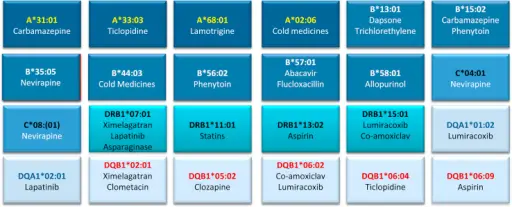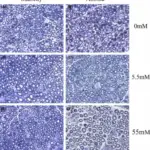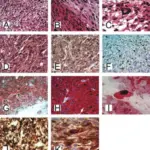Drug injury is an injury that may occur when you take certain medicines.
Types of Drug Injury Includes:
- Alcohol injury
- Marijuana injury
- Cocaine injury
- Opiate injury
- Amphetamine injury
- Anabolic Steroid injury
- Aspirin injury
- Acetaminophen injury
- Anticoagulant injury
- Menopausal hormonal therapy injury
- Oral contraceptive injury
What is Alcohol Injury?
Alcohol Injury is an injury related to excess consumption of alcohol.
What is the Pathology of Alcohol Injury?
The pathology of alcohol injury is:
-Etiology: The cause of alcohol injury is drug intoxication.
-Genes involved: None.
-Pathogenesis: The sequence of events that lead to alcohol injury shows acute toxicity in the central nervous system, where alcohol increases central nervous system inhibition and decreases excitation.
-Morphology: The morphology associated with alcohol injury shows acute swelling of and severe damage to brain neurons.
-Histology: The histology associated with alcohol injury shows hepatic steatosis, fibrosis ad necrosis.
How does Alcohol Injury Present?
Patients with alcohol injury typically affect males and females present at the age range of 21-49. The symptoms, features, and clinical findings associated with alcohol injury include headache, dizziness, dry mouth, thirst, nausea, vomiting, coma, respiratory depression, death, disorientation, lack of energy. Long-term effects include anemia, heart failure, organ malfunctioning, and high blood pressure.
How is Alcohol Injury Diagnosed?
Alcohol injury is diagnosed using lab and imaging tests, performing a physical exam, asking about drinking habits, use of DSM-5 criteria, and completing a psychological exam.
How is Alcohol Injury Treated?
Alcohol injury is treated with oral medication e.g Antabuse, psychological counseling, detox, and withdrawal.
What is the Prognosis of Alcohol Injury?
The prognosis of alcohol injury is fair and usually reverses within weeks or months.
What is Marijuana Injury?
Marijuana injury is the injury caused by marijuana intoxication
What is the Pathology of Marijuana Injury?
The pathology of marijuana injury is:
-Etiology: The cause of marijuana injury is drug overdose
-Genes involved: None.
-Pathogenesis: The sequence of events that lead to marijuana injury shows inhibition or stimulation of various neurotransmitters, including acetylcholine, L-glutamate, γ-aminobutyric acid, dopamine, norepinephrine, and 5-hydroxytryptamine. This neurotransmitter modulation may contribute to the central and peripheral effects observed in cannabinoid toxicity.
-Morphology: The morphology associated with marijuana injury shows smaller whole brain and percent cortical gray matter and larger percent white matter volumes.
-Histology: The histology associated with marijuana injury shows necrosis, inflammation, and congestion.
How does Marijuana Injury Present?
Patients with marijuana injury typically affect males and females present at the age range of 16-55. The symptoms, features, and clinical findings associated with marijuana injury include altered perceptions and mood, impaired coordination, difficulty with thinking and problem solving, disrupted learning and difficulty recalling memories, and increased appetite.
How is Marijuana Injury Diagnosed?
Marijuana injury is diagnosed using blood tests and urine analysis.
How is Marijuana Injury Treated?
Marijuana injury is treated with cognitive-behavioral therapy.
What is the Prognosis of Marijuana Injury?
The prognosis of marijuana injury is fair with symptoms reversible.
What is Cocaine Injury?
Cocaine injury is the injury caused by the overuse of cocaine.
What is the Pathology of Cocaine Injury?
The pathology of cocaine injury is:
-Etiology: The cause of cocaine injury is thrombus formation
-Genes involved: None.
-Pathogenesis: The sequence of events that lead to cocaine injury associated with cardiac is coronary artery vasoconstriction and accelerated atherosclerosis, and by initiating thrombus formation.
-Morphology: The morphology associated with cocaine injury shows coronary artery vasoconstriction.
-Histology: The histology associated with cocaine injury shows hyperplastic endoplasmic reticulum with necrosis.
How does Cocaine Injury Present?
Patients with cocaine injury typically affect males and females both present at the age range of 20-55. The symptoms, features, and clinical findings associated with cocaine injury include loss of sense of smell, nosebleeds, problems with swallowing, hoarseness, and an overall irritation of the nasal septum leading to a chronically inflamed, runny nose.
How is Cocaine Injury Diagnosed?
Cocaine injury is diagnosed with a blood test.
How is Cocaine Injury Treated?
Cocaine injury is treated with nitroglycerin if the injury is associated with chest pain, beta receptor antagonist, antiarrhythmics.
What is the Prognosis of Cocaine Injury?
The prognosis of cocaine injury is fair if treated promptly.
What is Opiate Injury?
Opiate Injury is the injury caused by excessive consumption of drug opioids.
What is the Pathology of Opiate Injury?
The pathology of opiate injury is:
-Etiology: The cause of opiate injury is drug overuse.
-Genes involved: None.
-Pathogenesis: The sequence of events that lead to opiate injury includes an endogenous opioid system which results in a lack of acting as a potent agonist to the mu receptor.
-Morphology: The morphology associated with opiate injury shows hypoxic-ischemic injury.
-Histology: The histology associated with opiate injury shows cerebral infarction and hemorrhage.
How does Opiate Injury Present?
Patients with opiate injury typically affect males and females present at the age range of 35-55. The symptoms, features, and clinical findings associated with the opiate injury include memory loss, vision and hearing loss, loss of balance and coordination, problems walking or moving, irritability, depression, or confusion, trouble with reading and writing.
How is Opiate Injury Diagnosed?
Opiate injury is diagnosed with blood tests, CT scans, and MRIs.
How is Opiate Injury Treated?
Opiate injury is treated with Naloxone.
What is the Prognosis of Opiate Injury?
The prognosis of opiate injury is good if treated properly.
What is Amphetamine Injury?
Amphetamine Injury is the injury caused by the drug amphetamine. Amphetamine is a CNS stimulant, use to treat attention deficit hyperactivity disorder.
What is the Pathology of Amphetamine Injury?
The pathology of amphetamine injury is:
-Etiology: The cause of amphetamine injury is smoking and drug overdose.
-Genes involved: None.
-Pathogenesis: The sequence of events that lead to amphetamine injury shows inhibition of specific transporters responsible for the reuptake of biogenic amines from the synaptic nerve ending and presynaptic vesicles.
-Morphology: The morphology associated with amphetamine injury shows 5 HT axons.
-Histology: The histology associated with amphetamine injury shows alveolar rupture and terminal asphyxia.
How does Amphetamine Injury Present?
Patients with amphetamine injury typically affect males and females both present at the age range of 18-55. The symptoms, features, and clinical findings associated with amphetamine injury include agitation, psychosis, seizures, hypertension, tachycardia, hyperthermia, stroke, and potentially life-threatening cardiac dysrhythmias.
How is Amphetamine Injury Diagnosed?
Amphetamine injury is diagnosed using blood tests, CT scans.
How is Amphetamine Injury Treated?
Amphetamine injury is treated with gastric decontaminants, sedatives, muscle relaxants, and other drugs.
What is the Prognosis of Amphetamine Injury?
The prognosis of amphetamine injury is fair as the symptoms can be reversed.
What is Anabolic Steroid Injury?
Anabolic Steroid Injury is the injury caused by taking anabolic steroids.
What is the Pathology of Anabolic Steroid Injury?
The pathology of anabolic steroid injury is:
-Etiology: The cause of anabolic steroid injury is weight lifting
-Genes involved: None.
-Pathogenesis: The sequence of events that lead to anabolic steroid injury shows dysplasia of collagen fibrils, which can decrease the tensile strength of the tendon, leading to injury.
-Morphology: The morphology associated with anabolic steroid injury shows changes in the tendon’s crimp and alter the rupturing strain of the tendon.
-Histology: The histology associated with anabolic steroid injury shows a ruptured tendon.
How does Anabolic Steroid Injury Present?
Patients with anabolic steroid injury typically affect males present at the age range of 18-40. The symptoms, features, and clinical findings associated with anabolic steroid injury include fatigue, restlessness, loss of appetite, sleep problems, decreased sex drive, and steroid cravings.
How is Anabolic Steroid Injury Diagnosed?
Anabolic steroid injury is diagnosed using blood tests and urine analysis.
How is Anabolic Steroid Injury Treated?
Anabolic steroid injury is treated using antibiotics ciprofloxacin and doxycycline.
What is the Prognosis of Anabolic Steroid Injury?
The prognosis of anabolic steroid injury is good with complete reversible symptoms.
What is Aspirin Injury?
Aspirin Injury is the injury due to aspirin intake.
What is the Pathology of Aspirin Injury?
The pathology of aspirin injury is:
-Etiology: The cause of aspirin injury is drug overdose
-Genes involved: None.
-Pathogenesis: The sequence of events that lead to aspirin injury includes disrupting the hydrophobicity of mucus HCO3− the protective layer of the gastric mucosa.
-Morphology: The morphology associated with aspirin injury shows signs of cytolysis in situ or as desquamation.
-Histology: The histology associated with aspirin injury shows gastric lesion consisting of loss of mucus and an alteration in nuclear appearance.
How does Aspirin Injury Present?
Patients with aspirin injury typically affect males and females present at the age range of 25-45. The symptoms, features, and clinical findings associated with aspirin injury include ringing in the ears, nausea, vomiting, drowsiness, confusion, and rapid breathing.
How is Aspirin Injury Diagnosed?
Aspirin injury is diagnosed using simple blood tests.
How is Aspirin Injury Treated?
Aspirin injury is treated with anti-inflammatory and typical antibiotics.
What is the Prognosis of Aspirin Injury?
The prognosis of aspirin injury is fair with complete recovery.
What is Acetaminophen Injury?
Acetaminophen injury is the injury caused by taking the drug acetaminophen.
What is the Pathology of Acetaminophen Injury?
The pathology of acetaminophen injury is:
-Etiology: The cause of acetaminophen injury is drug overdose.
-Genes involved: None.
-Pathogenesis: The sequence of events that lead to acetaminophen injury include gastric emptying with increased elimination of half-life.
-Morphology: The morphology associated with acetaminophen injury shows NAPQI.
-Histology: The histology associated with acetaminophen injury shows cytolysis and the presence of centrilobular necrosis.
How does Acetaminophen Injury Present?
Patients with acetaminophen injury typically affect males and females present at the age range of 35-55. The symptoms, features, and clinical findings associated with acetaminophen injury include yellowing of skin or eyes, pain in abdomen, nausea, and vomiting, loss of appetite, fatigue, excessive sweating, dark urine and stools, and pale skin color.
How is Acetaminophen Injury Diagnosed?
Acetaminophen injury is diagnosed using a blood test.
How is Acetaminophen Injury Treated?
Acetaminophen injury is treated with intravenous fluids
What is the Prognosis of Acetaminophen Injury?
The prognosis of acetaminophen injury is fair if treated properly.
What is Anticoagulant Injury?
Anticoagulant injury is the injury associated with taking anticoagulants.
What is the Pathology of Anticoagulant Injury?
The pathology of anticoagulant injury is:
-Etiology: The cause of anticoagulant injury is hemorrhage
-Genes involved: None.
-Pathogenesis: The sequence of events that lead to anticoagulant injury shows minimal or no effect by suppressing the synthesis or function of various clotting factors that are normally present in the blood
-Morphology: The morphology associated with anticoagulant injury altered mental state and vague skin rashes.
-Histology: The histology associated with anticoagulant injury shows ischemic-reperfusion injury in nephropathy.
How does Anticoagulant Injury Present?
Patients with anticoagulant injury typically affect males and females present at the age range of 30-60. The symptoms, features, and clinical findings associated with the anticoagulant injury include bleeding, gangrene, blood in urine, weakness, fainting, abdominal pain, black stools, or vomiting of blood.
How is Anticoagulant Injury Diagnosed?
Anticoagulant injury is diagnosed with blood tests, ultrasound, CT Scan, and MRI.
How is Anticoagulant Injury Treated?
Anticoagulant injury is treated with warfarin treatment and coagulation products.
What is the Prognosis of Anticoagulant Injury?
The prognosis of anticoagulant injury is somewhat fair.
What is Menopausal Hormonal Therapy Injury?
Menopausal hormonal therapy Injury is the injury caused by medication that contains female hormones
What is the Pathology of Menopausal Hormonal Therapy Injury?
The pathology of menopausal hormonal therapy injury is:
-Etiology: The cause of menopausal hormonal therapy injury is estrogen
-Genes involved: None.
-Pathogenesis: The sequence of events that lead to menopausal hormonal therapy injury is the estrogen, which the body stops making in menopause.
-Morphology: The morphology associated with menopausal hormonal therapy injury is unknown.
-Histology: The histology associated with menopausal hormonal therapy injury shows atypical hyperplasia.
How does Menopausal Hormonal Therapy Injury Present?
Patients with menopausal hormonal therapy injury typically affect females present at the age range of 35-55. The symptoms, features, and clinical findings associated with menopausal hormonal therapy injury include deep vein thrombosis, pulmonary embolus, bleeding, bloating, breast tenderness or enlargement, headaches, mood changes, nausea, hot flushes, night sweats, sleep disturbances, emotional instability, anxiety, depression, vaginal dryness, as well as increased risks of osteoporosis and cardiovascular disease.
How is Menopausal Hormonal Therapy Injury Diagnosed?
Menopausal hormonal therapy injury is diagnosed using ultrasound, FSH levels, blood sugar levels, urine tests.
How is Menopausal Hormonal Therapy Injury Treated?
Menopausal hormonal therapy injury is treated with combined estrogen-progestin therapy or hysterectomy in advanced cases
What is the Prognosis of Menopausal Hormonal Therapy Injury?
The prognosis of menopausal hormonal therapy injury is fair if treated properly.
What is Oral Contraceptive Injury?
Oral contraceptive injury is the injury caused by taking oral contraceptive pills.
What is the Pathology of Oral Contraceptive Injury?
The pathology of oral contraceptive injury is:
-Etiology: The cause of oral contraceptive injury is occlusive vascular disorders and drug overdose.
-Genes involved: None.
-Pathogenesis: The sequence of events that lead to oral contraceptive injury includes endothelial damage leading to vascular disorders.
-Morphology: The morphology associated with oral contraceptive injury shows increased vascular permeability, loss of vascular tone, and venous stasis.
-Histology: The histology associated with oral contraceptive injury shows endothelial and intimal proliferation associated with thrombotic occlusion.
How does Oral Contraceptive Injury Present?
Patients with oral contraceptive injury typically affect women present in the age range of 15-60. The symptoms, features, and clinical findings associated with the oral contraceptive injury include bloating, swelling, breast tenderness, an increase of blood clot formation, abdominal pain, bleeding, discolored urine, drowsiness, weight gain, etc.
How is Oral Contraceptive Injury Diagnosed?
Oral contraceptive injury is diagnosed with ultrasound and blood tests.
How is Oral Contraceptive Injury Treated?
Oral contraceptive injury is treated with antibiotics, antiepileptics, and painkillers.
What is the Prognosis of Oral Contraceptive Injury?
The prognosis of oral contraceptive injury is fair if treated early and properly.



